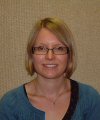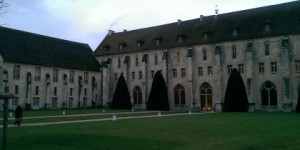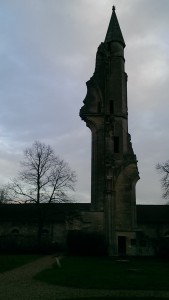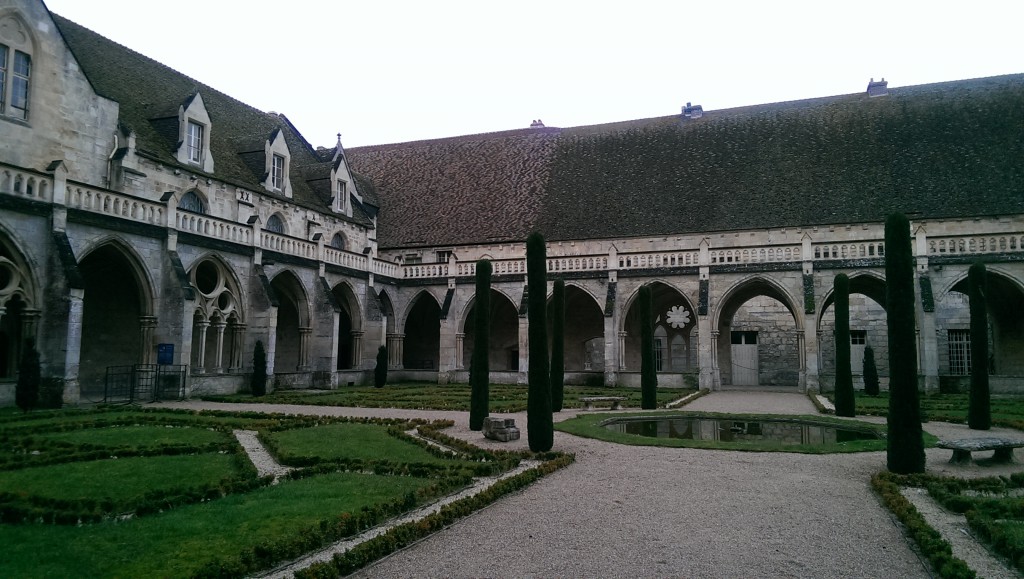by Dr Lucy Veale, University of Nottingham, cross-posted from the Weather Extremes project blog 
AHRC and LABEX – a new partnership
A couple of weeks ago I was lucky enough to represent the Weather Extremes team at a Franco-British Research Workshop organised by our funders AHRC, and LABEX (Laboratory of Excellence), a similar funder in France. The title of the workshop was ‘Delving back into the past to look into the present and future’ and the main aim was to explore connections between research funded under the AHRC’s Care for the Future theme and LABEX’s ‘Les passes dans le present: histoire, patrimoine, memoire.’ Both initiatives seek to explore representations of the past from multiple perspectives and disciplines, and have shared priorities and commitments. The programme from the event lists all of the talks and presenters but I thought I would use this blog post to summarise some of the research themes that were considered. If you attended please do add your thoughts or links to project websites etc, and please accept my apologies if I haven’t mentioned you in person.
Royaumont
The location for the 2-day workshop was the beautiful Royaumont Foundation, a former Cistercian abbey built between 1228 and 1235, located near Asnières-sur-Oise in Val-d’Oise, approximately 30 km north of Paris, France. The church of Royaumont (pictured below) was destroyed in 1792 when the new owner of the Abbey, the Marquis of Travanet, used the stones to build workers’ quarters in the park after turning the Abbey into a cotton mill. At the beginning of the 20th century the Abbey was bought by the Goüin family, who established the Royaumont Foundation in 1964. The impressively restored Abbey is now a venue for a wide variety of cultural activities, particularly summer concerts, and events like the one I attended!
Franco-British conversations
The first speakers drew on personal research experience to review the challenges and opportunities of working on Franco-British projects. Franck Collard spoke on assembling teams, and the requirements to acknowledge different ways of thinking about history. Herve Inglebert highlighted the problems of finding a genuinely shared approach, and the importance of taking seriously the different contexts and backgrounds that people have, the language(s) of publication, and translation requirements. Jacob Dahl and Bertrand Lafont drew on examples of historical French and British archaeologists of Mesopotamia to demonstrate how rivalry between the two nations contributed to success. Berny Sebe also identified similar figures in the two countries, this time in relation to processes of decolonisation, and the new ways that imperial heroes are being used, and given a new lease of life in the former colonies. Jacob and Bertrand’s Cuneiform Digital Library Initiative raised some issues relating to our database of extreme weather, relating to access and digitisation, the use of specialised language, the loss of knowledge in information, and demonstrated how their publications hyperlink back to the source materials, maintaining that important connection. Later speakers also highlighted the changing needs and nature of research in the digital age, and the role of building datasets to answer new questions also came up in the final discussion. Jacob and Bertrand also spoke briefly about their investigations into the modern history of some of these ancient artefacts and the impact on understanding. Some of the documents that we’ve consulted I’m sure have been taken on interesting journeys before ending up in the archive, and it would be interesting to explore more, as well as considering the uses to which they have been put within the archive. Sophie Richter-Devro ‘s paper highlighted the difficulties of writing or documenting the flexible, ever changing oral traditions of the Naqab Bedouin women, and the dangers of ‘freezing’ narratives and communities. Our records of extreme weather have also inevitably lost something of the multi-sensory experience of weather in being written down, but some nevertheless retain genuine emotion. Paulo Jedlowski helpfully drew on the work of Koselleck in discussing ‘future presents’ and ‘present futures’, memories of the future, and imagined futures of the past that might be used to link generations. Our project title uses a Koselleck quotation ‘Spaces of Experience and Horizons of Expectation’ so Paulo’s talk inevitably got me thinking in more detail about what predictions, visions, or imaginations of the future, particularly future weather, our archival accounts contain…
The remainder of the talks detailed projects funded by AHRC or LABEX. I sadly wasn’t able to attend them all as they were structured in parallel sessions so can’t name all of the speakers but will draw out a few points of interest. Charlotta Hillerdal detailed the tricky terminology of archaeology (nunalleq.wordpress.com), whilst traceology on stone tools as revealed under the microscope was discussed by Isabelle Sidera. We are definitely dealing with traces that are left behind in relation to extreme weather events. Sarah Gensburger focussed on memory as a public issue, tracing memory policy in relation to specific organisations and political parties, whilst Arman Sarvarian considered apologies by the state, specifically their timing and language. Marianne Cojannot-Leblanc and Emmanuel Chateau demonstrated the importance of considering future uses of the digital resources in order to ensure future usage and to meet future need, with reference to the Paris Guides. Memory, and specifically intergenerational memory, was the subject of Richard Haynes’ project on sports heritage in Glasgow which successfully used archives, alongside geo-referencing and mapping activities with school children, to engage with communities across generations. Richard’s talk for me, also highlighted the important role that individual biographies and life stories can play in these historical projects – discovering more about the authors of our weather narratives definitely brings the stories to life, and other speakers brought up the possibility of place or building biographies. Another link was that sport, like weather, is something that most people have something to say about! Carry van Lieshout of ‘The Power and the Water’ project detailed the contribution that a historical study could make to contemporary issues around water management, access and the environment, showing conflicts and solutions of the past that may be useful today. Similarly we hope that be exploring perceptions of extreme weather in the past, and time and place specific vulnerabilities, that we could perhaps better understand contemporary impacts of and reactions to extreme weather, addressing themes like resilience and risk. In summing up the first day Andrew Thompson emphasised the multiplicity of todays, tomorrows and yesterdays that are possible. We have already found that our weather data is very messy, offering multiple narratives.
Jean Allain looked at anti-slavery of the past and present, emphasising the importance of definitions, and historical lessons to link the rich past to the present in order to shape the future. Baptiste Buob’s main concern in his film-making was representing the artisan – a violin maker – the influence that the presence of the film maker has, and also the invisible public. During the talk I remember thinking that I could have watched much more of the fascinating film and fortunately it’s available here: https://vimeo.com/22691598. Religious understandings of temporality, and specifically deep time, were tackled by Michael Northcott, and I really liked that he drew on figures like James Hutton and Charles Lyell in setting up his consideration of ‘deep time’. There are more parallels here with our weather narratives, and the often complicated interplay of religious and scientific understandings of particular events. Carl Lavery took us to Hashima Island in Japan, once the base for Mitsibushi and the most densely populated place in the world, closed and abandoned in 1974 as coal gave way to petroleum. Carl detailed a variety of strategies for soliciting memory, particularly ‘thinking like a ruin’. Carlos Lopez Galviz detailed a comparative history of London and Paris, considering the envisioning of the futures of both cities in the nineteenth century, and the paths not taken. Finally the insight that Sandra Kemp offered into the Royal Society soirees was fascinating, particularly the representations of the future that are emerging from the archive, the new inventions and ideas that were showcased at these multisensory events that offered equal promise for science and the arts – again a theme that I think our weather narratives speak too.
This partnership activity was a new initiative for AHRC and LABEX, but a successful and informative one, in a very pleasant location with lovely people and delicious food! As a team we look forward to exploring avenues for research within the partnership. We’d be very pleased to hear more from any of the other project teams that attended the event that can identify links with the work we’ve been doing, or from other research teams exploring extreme weather in France.

